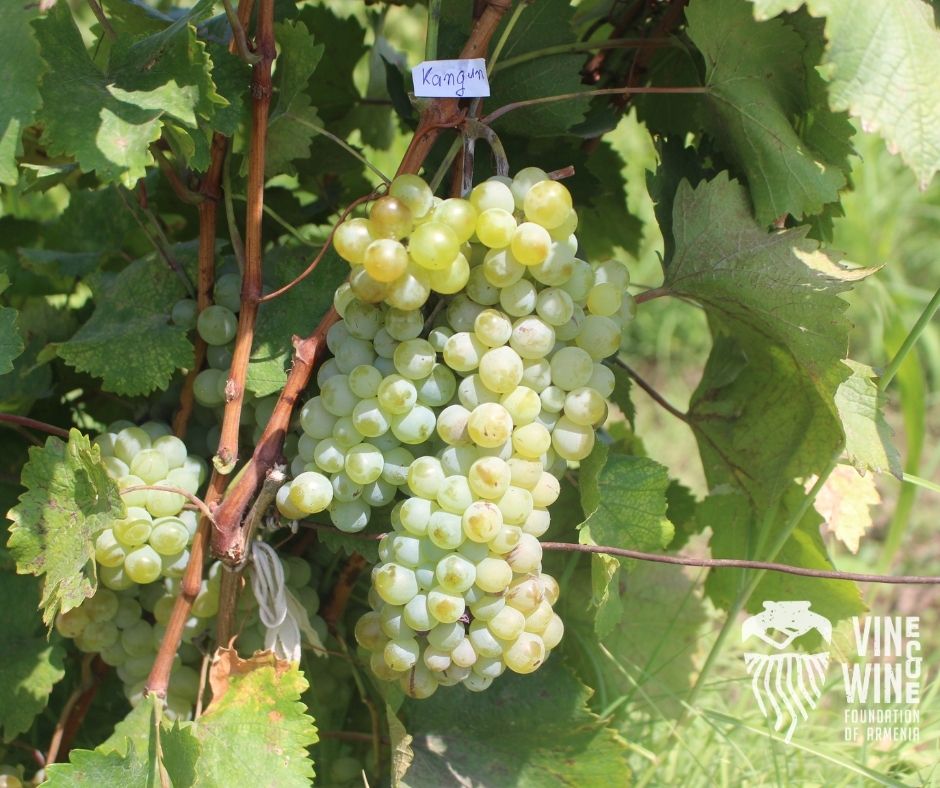Kangun
Ampelographic characteristics:
 Sugar content: 23.0-24.0%
Sugar content: 23.0-24.0%
 Vine is medium high. Leaves are medium size, round, five lobed. Bunches are large, rarely medium size, cylindrical, dense. Berries are medium, oval.
Vine is medium high. Leaves are medium size, round, five lobed. Bunches are large, rarely medium size, cylindrical, dense. Berries are medium, oval.

Synonyms:
Unknown. Selection number of the variety - 2-17-22
Resistance to diseases:
 High resistance to fungal diseases
High resistance to fungal diseases
Vegetative features:
 Late ripening grape. The grape reaches its technical ripeness in the sum of active temperatures 2900 - 3000 °С for 155-165 days. Shoot growing habit is average. Yield - 15-30 t/ha.
Late ripening grape. The grape reaches its technical ripeness in the sum of active temperatures 2900 - 3000 °С for 155-165 days. Shoot growing habit is average. Yield - 15-30 t/ha.
Climate conditions:
 The variety is frost resistant, however in some regions the vines need to be covered winter.
The variety is frost resistant, however in some regions the vines need to be covered winter.
 Wine characteristics:
Wine characteristics:
Kangun was initially created and cultivated for the production of brandy. The variety was
so well settled in the Armenian terroir that nowadays it excellently demonstrates its sustainable
character in white dry and dessert wines; it is under the strict attention of large producers.
Kangun partners well in the blend with other grape varieties also in sparkling wines.
Perfect Kangun wines impress with light straw colour with the notes of white fruits,
valley flowers, honey and quince: a wine with abundant freshness and prolonged aftertaste.
Wines from Kangun are lovely pair with fresh seafood salads, game with light souses,
fruit pie and sorbet from exotic fruits.
 Historic notes:
Historic notes:
Kangun grape variety was created during Soviet times, by crossingSukhalinskiy Beliiy
and Rkatsiteli; the latest is a result of crossing Chardonnay and Moldavian variety – Plavay. This
means that Kangun is the child of three grape varieties.
Kangun is one the most common Armenian white varieties, and in translation the name
means “resistant”.
The main regions where Kangun is cultivated are Aragatsotn, Armavir and Ararat Valley.

